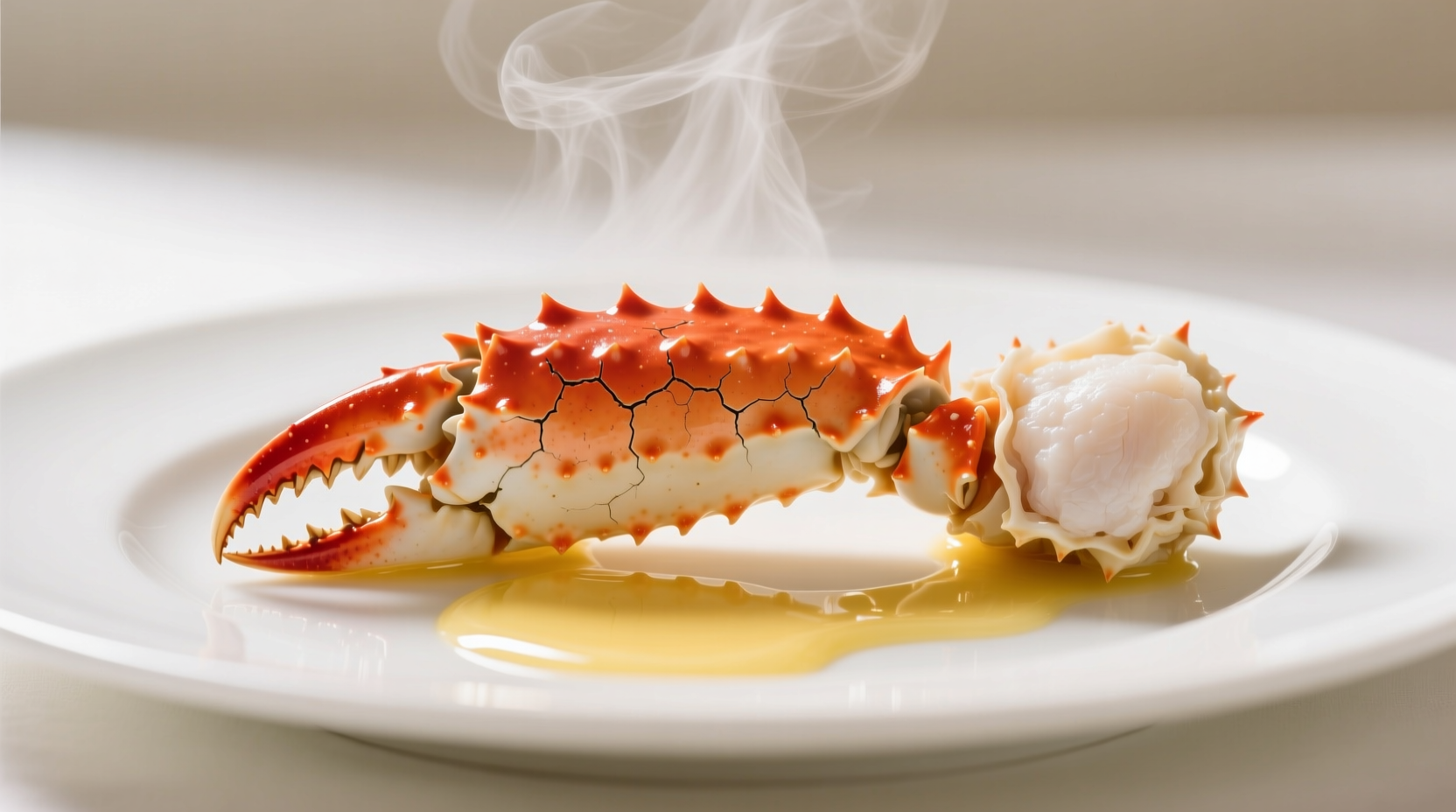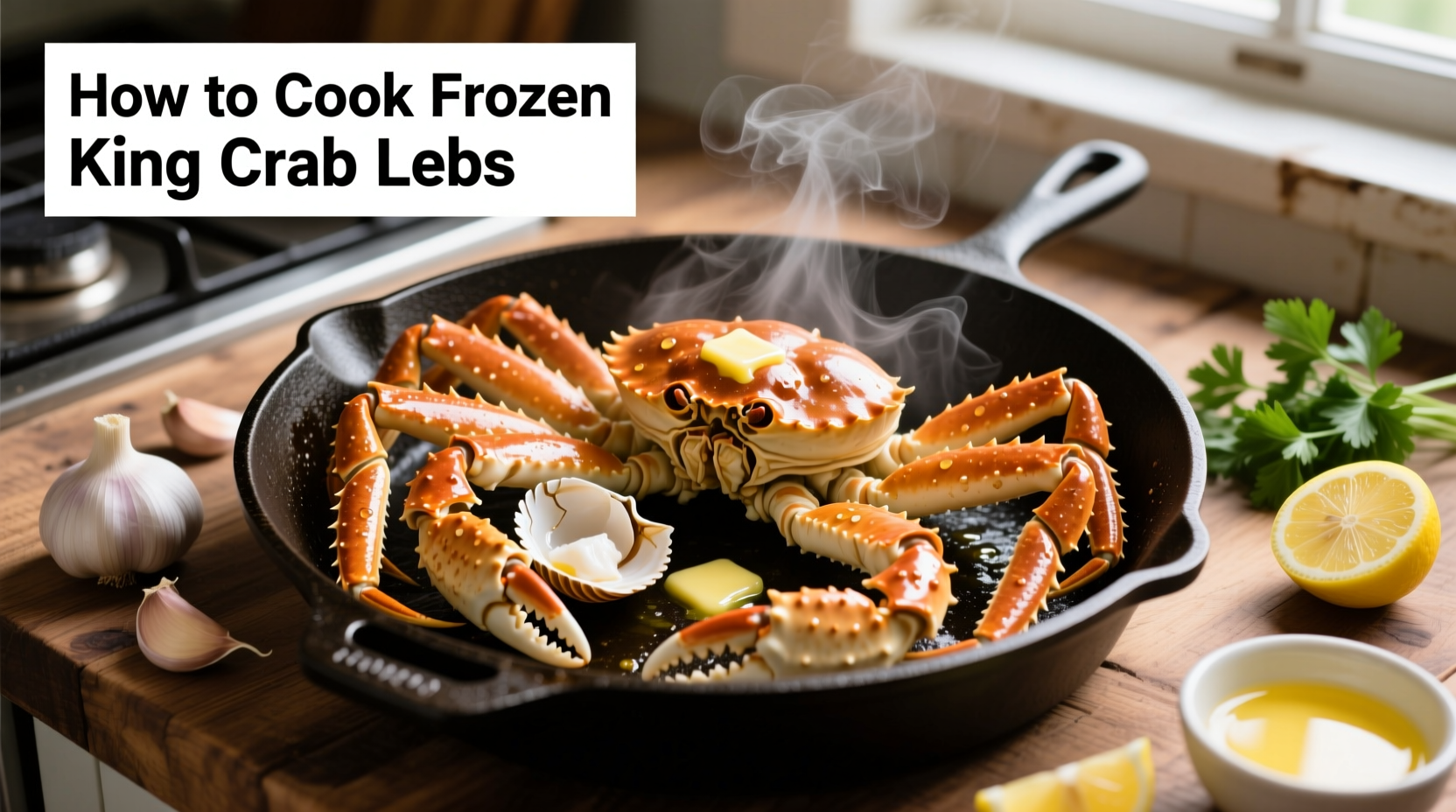King crab legs are a luxurious seafood treat that many home cooks feel intimidated to prepare. The good news? Cooking frozen king crab legs is simpler than you think, and you don't need to thaw them first. As a professional chef who's prepared thousands of crab legs in both fine dining and casual settings, I've perfected a foolproof method that guarantees restaurant-quality results every time.
Why Cooking From Frozen Yields Better Results
Contrary to popular belief, thawing king crab legs before cooking often leads to waterlogged, rubbery meat. When frozen seafood thaws, ice crystals melt and draw out natural juices. By cooking directly from frozen, you preserve the crab's delicate moisture balance. The U.S. Food and Drug Administration confirms that properly cooked frozen seafood reaches safe internal temperatures without compromising quality when prepared correctly (FDA Food Safety Guidelines).
| Cooking Method | Time Required | Texture Result | Flavor Preservation |
|---|---|---|---|
| Steaming (frozen) | 8-10 minutes | Perfectly tender | Excellent |
| Boiling (frozen) | 6-8 minutes | Slightly waterlogged | Good |
| Steaming (thawed) | 5-7 minutes | Rarely consistent | Fair |
Essential Equipment Checklist
Before you begin, gather these kitchen essentials:
- Large pot with tight-fitting lid (6-8 quart capacity)
- Steamer basket that fits inside your pot
- Kitchen tongs or crab cracker tools
- Butter brush for serving
- Sharp kitchen shears (for splitting legs)
Pro tip: If you don't have a steamer basket, create a makeshift one using aluminum foil balls placed at the bottom of your pot. The foil balls will elevate the crab legs above the water level while allowing steam to circulate.
Step-by-Step Cooking Process
Preparation Phase
Remove frozen king crab legs from packaging and give them a quick rinse under cold water to remove any surface ice crystals. Arrange them in a single layer in your steamer basket. Don't overcrowd - cook in batches if necessary. Overcrowding creates uneven cooking and steaming.
Steaming Technique
- Add 1-2 inches of water to your pot (never let water touch the crab)
- Bring water to a rolling boil
- Place crab legs in steamer basket and lower into pot
- Cover tightly with lid
- Reduce heat to maintain a steady simmer
- Steam for 8-10 minutes for 1-1.5 pound portions
Timing is critical with king crab. Unlike other seafood, crab legs are already cooked before freezing - you're simply reheating them. The University of California Sea Grant program confirms that overcooking is the primary reason for tough, rubbery crab meat (UC Sea Grant Seafood Guide).
Visual Doneness Indicators
Look for these signs that your king crab legs are perfectly cooked:
- Shell turns bright red-orange (if previously frozen cooked)
- Meat becomes opaque white throughout
- Internal temperature reaches 140°F (60°C) when checked with instant-read thermometer
- Flesh separates easily from shell when tested with fork

Serving Like a Professional
Remove crab legs immediately when done and let rest for 2-3 minutes. This brief resting period allows heat to distribute evenly. Serve with:
- Drawn butter (melted butter with lemon juice and pinch of cayenne)
- Fresh lemon wedges
- Simple herb salad
For presentation, use kitchen shears to split the legs lengthwise before serving. This makes extraction easier and shows off the beautiful snow-white meat inside. Professional chefs always arrange crab legs with the curved side up - it creates a more appealing visual presentation.
Troubleshooting Common Problems
Problem: Meat sticks to shell
Solution: This usually happens when crab is overcooked. Reduce next cooking time by 1-2 minutes. For immediate salvage, place under broiler for 30 seconds to loosen meat from shell.
Problem: Uneven heating
Solution: Frozen crab legs vary in thickness. Arrange thicker sections toward the center of the steamer where heat concentrates. Rotate the steamer basket halfway through cooking.
Problem: Waterlogged texture
Solution: You're likely using too much water or boiling instead of steaming. Maintain just 1-2 inches of water and ensure it's simmering, not boiling vigorously.
Alternative Cooking Methods
Oven Method (Best for large quantities)
Preheat oven to 375°F (190°C). Place frozen crab legs on baking sheet, cover tightly with foil, and bake for 15-18 minutes. This method works well when entertaining but requires slightly longer cooking time.
Boiling Method (Use with caution)
While steaming is preferred, boiling works in a pinch. Use minimal water (just enough to cover crab), bring to gentle simmer (not rolling boil), and cook for 6-8 minutes. Add 1 tablespoon of vinegar to water to help maintain texture.
Storage Guidelines for Leftovers
Store cooked crab in airtight container with damp paper towel for up to 2 days. Never refreeze previously frozen then cooked crab. When reheating, use the steaming method for 3-4 minutes - microwaving will toughen the delicate meat.











 浙公网安备
33010002000092号
浙公网安备
33010002000092号 浙B2-20120091-4
浙B2-20120091-4